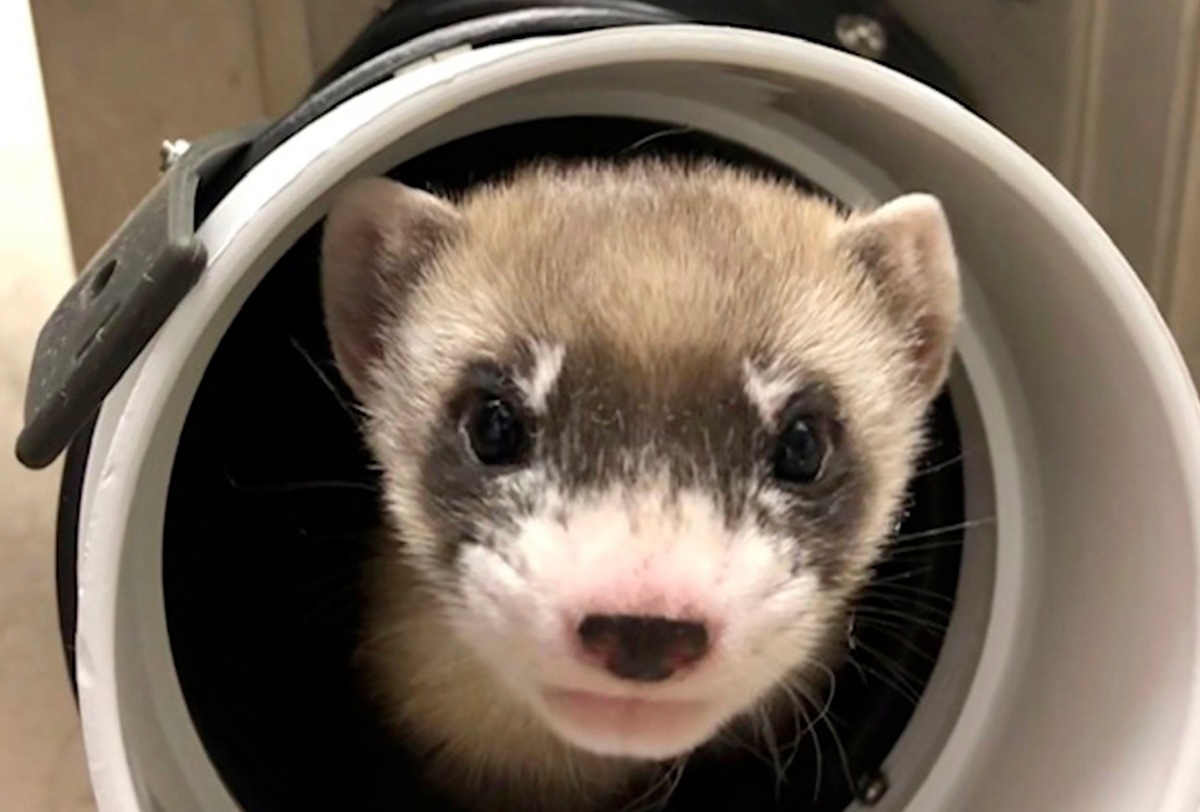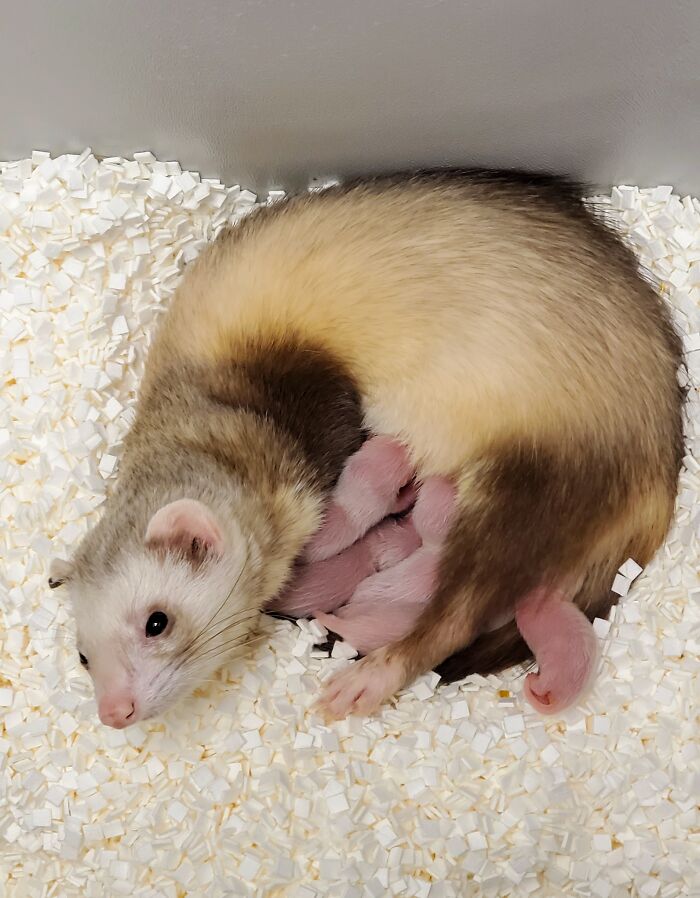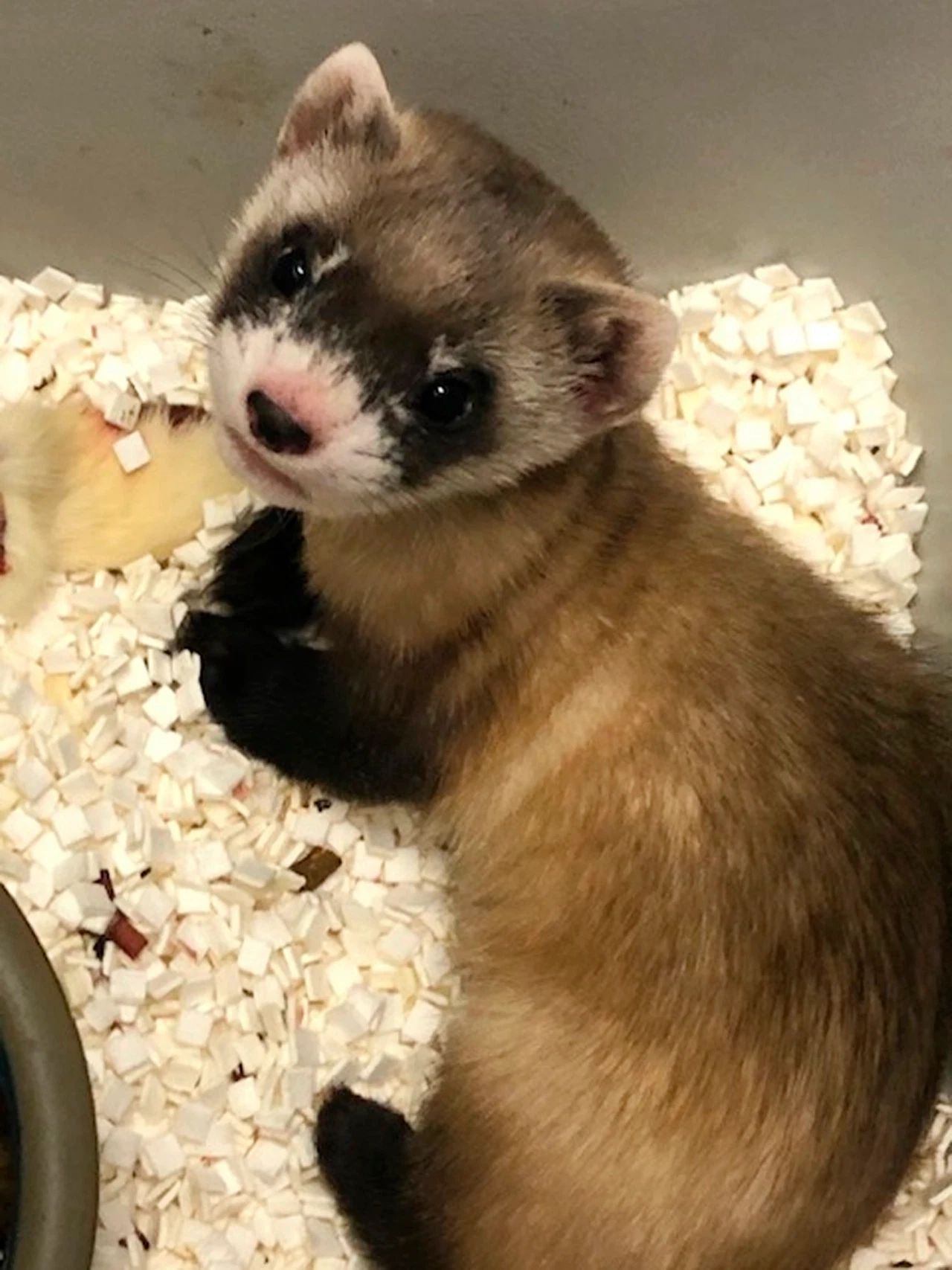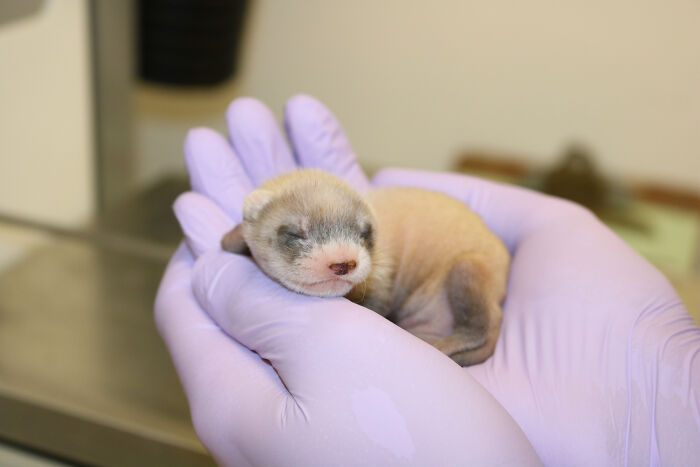For the first time, scientists have cloned an endangered U.S. species! Meet black-footed ferret Elizabeth Ann, whose “original version” has been dead for more than 30 years.

Image credit: U.S. Fish and Wildlife Service
North America’s only ferret species, the black-footed ferret (also known as prairie dog hunter), had been long thought to be extinct when in 1981, seven specimens were found on a Wyoming ranch. After one of them, Willa died in 1988, scientists sent her tissues to a ‘frozen zoo’ run by San Diego Zoo Global that maintains cells from more than 1,100 species and subspecies worldwide. They were hoping that someday they can perform an experiment like they have just done now.
The cute little ferret arrived via C-section on December 10, and became the first-ever cloned endangered US species. While a domesticated ferret carried the cloned embryo, the new ferret, who is being raised at a Fish and Wildlife Service black-footed ferret breeding facility in Fort Collins, Colorado, has all the instincts and aggression of her wild ancestors.

Image credit: U.S. Fish and Wildlife Service
This is a fresh success story for the black-footed ferret that also marks a groundbreaking step in the recovery of endangered species. “The birth of Elizabeth Ann could help address genetic barriers faced by many imperiled wildlife,” stated the US Fish And Wildlife Service on Twitter.
The black-footed ferret has become an icon of how well conservation and repopulation efforts can work. After irritated ranchers poisoned almost all of the animals in the wild, this species of ferret was thought to have gone extinct altogether. Then, the population grew from a group of just a few specimens to about 1,000 black-footed ferrets living in the wild today. This doesn’t include populations in wildlife preserves, zoos, and other supervised programs.

Image credit: U.S. Fish and Wildlife Service
Because of the way black-footed ferrets came back from believed extinction, each animal was precious to the genetic diversity of the species. The reason why scientists decide to freeze Willa was exactly this: to allow future scientists to find a way to bring those genes back to the group.
“This small number of individuals has put limitations on the species’ genetic diversity, creating challenges for resiliency to changing environments and emerging disease threats.”
After Willa’s genes were fertilized into an embryo, it was carried by a “regular” domestic ferret, who then gave birth to Elizabeth Ann. A regular ferret was chosen because scientists wanted to mitigate the risks associated with pregnancy. The success of this procedure has made animal conservators more confident about bringing back other specimens, including ones that will require genetic patching or modification in order to even be successfully cloned.
Cloning Willa is a huge step, but that’s by far not the end of the plans with frozen animals like her. “Eventually scientists may be able to modify those genes to help cloned animals survive,” Associated Press’s Mead Gruver noted.

Image credits: Revive & Restore
Jurassic Park slowly coming true before our eyes? Scientists are very close to cloning the mammoth and other long-extinct species, so the idea may not be that far-fetched. Of course, fears of unintended consequences in such cases are valid, but as for animals like the dodo or the Tasmanian tiger, they went extinct because of our irresponsibility and not because of a change in their ecosystem or the climate. And scientists say the benefits of raising the dead outweigh the drawbacks.

